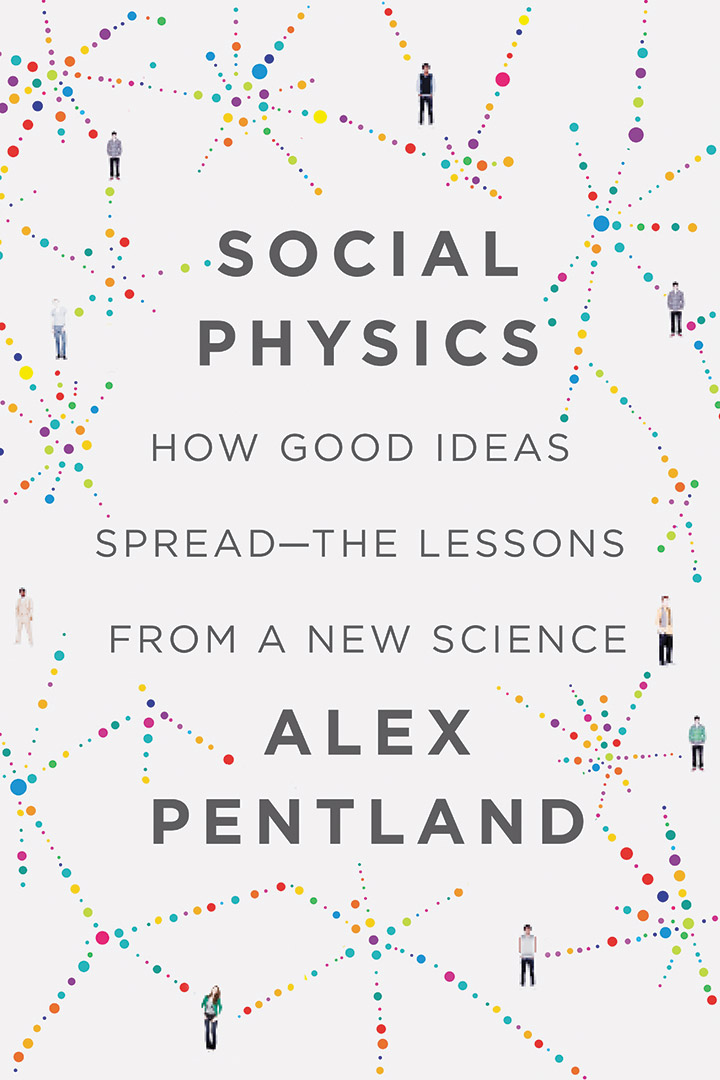INSIDER: Socializing for a Spark: Finding Winning Ideas Through Your Connections
Wesley Bryan, MBA Candidate
 We make connections every day, in person, over the phone or email, through Linkedin, and even via Snapchat. Every opportunity we have to meet people is another connection to a new prospective client. But, can this network also be the source for innovations and new ideas? The answer seems like a simple yes. In Social Physics, the author, Alex Pentland, describes the implications of social networks and shows how idea exchange goes far beyond what we might expect and how social networks have important implications for real estate professionals.
We make connections every day, in person, over the phone or email, through Linkedin, and even via Snapchat. Every opportunity we have to meet people is another connection to a new prospective client. But, can this network also be the source for innovations and new ideas? The answer seems like a simple yes. In Social Physics, the author, Alex Pentland, describes the implications of social networks and shows how idea exchange goes far beyond what we might expect and how social networks have important implications for real estate professionals.
Think Point 1: Where Do We Find Ideas and How Do They Get to Us?
Everything seems to be built from the process of idea flow and social learning. We get ideas by watching others, and in doing so, learn new behaviors and practices. It’s innate to us as human beings and even to the animal kingdom. Habits, preferences, and beliefs stem from such learning as social learning is key to adapting to changing environments.
There are, of course, many places where we can come into contact with new ideas. Seeking out and engaging with new people is one key to improving your ideas. Pursuing a diverse group of people with multiple backgrounds will help broaden your viewpoint. Pentland notes that this is especially useful when making important decisions. In fact, he recommends looking particularly for individuals who like to think unconventionally. Time is limited so rather than engaging with as many people as possible, ensure that the people with whom you are engaging are as diverse as possible.
Pentland states “idea flow is the chance that a person’s behavior will change when a new idea has appeared in their extended social network.” This process of idea flow is the core through which we begin to look at social learning. Through one of the author’s previous studies on a stock-trading system, he describes how people’s social learning emanates from their reliance on advice and actions of others. Those profiting the most were not those who followed other people’s opinions the most or those who followed other people’s opinions the least. The most profitable were those who chose to have a balance of these extremes. In sum, the most profitable were those having access to a diversity of ideas.
Real estate agents can employ this idea-finding exercise in their work environments. You can seek out many different opinions when looking for ways in which to reach new clients. Agents can choose to surround themselves with diverse individuals in order to get a better range of feedback and support for open houses and real estate advice. Attending open houses in neighborhoods or areas in which the agent does not do business may yield new perspectives. New real estate locations and methods for reaching customers can be sparked by conversations with others, even those who are not involved in the real estate industry. Seek to learn from former clients by requesting feedback and staying in touch to determine what might be done differently.
Think Point 2: Fit
Pentland discusses social learning and idea flow, he points out that human preferences are influenced by the preferences of those around them. Consequently we have an innate drive to want to fit into our surroundings and fit into our community. Real close friends (that doesn’t include virtual friends) have much more of an influence on us than those that we know only through social media. We feel drawn to fit in with those we see often. The ideas and opinions we hear from those closest to us will have the largest impact.
Another way fit reveals itself in our lives is through making work-related decisions. To get everyone to work together, we must recognize that we cannot change people’s behavior. We must accept the diversity of behaviors and opinions that become evident in the workplace. While forming a cooperative, group-based decision is important, adequate time and energy is necessary to enable this to happen.
 One way in which real estate agents can use fit in their professional work environments is to treat clients as if they are close friends. Since people tend to listen to the ideas and opinions of those they are close to, the closer an agent can make a potential client feel, the more likely the agent will transition the person to true client status. Staying at a surface-level in conversations does not promise to close the relational distance between two people. Delving into richer conversations with clients in search of “things in common” can also yield increased connectivity and improved fit.
One way in which real estate agents can use fit in their professional work environments is to treat clients as if they are close friends. Since people tend to listen to the ideas and opinions of those they are close to, the closer an agent can make a potential client feel, the more likely the agent will transition the person to true client status. Staying at a surface-level in conversations does not promise to close the relational distance between two people. Delving into richer conversations with clients in search of “things in common” can also yield increased connectivity and improved fit.
Think Point 3: Improvement of Organizations
These considerations inevitably flow into looking to improve organizations and their work environment. Work groups can often times perform better when forming decisions than they do as a group. Their group decisions often have multiple influences that are drawn from the idea flow that each member contributes to the group.
The more communication and interactions that take place the better ideas are transitioned between coworkers. This in turn can increase productiveness of everyone within a work environment. These connections also improve each other’s creativity. Work should be a social experience that spreads ideas, which in turn improves everyone’s performance. Social media can also be used to improve processes and the understanding of one’s community. All of these different elements of “fit” and engagement lead up to more cooperation, built up trust, and improved interactions in the work environment.
Real estate agents have ongoing connections with potential and current clients which allow easy transfer of ideas. If the agent carefully listens to his/her clients and prospective clients, they are likely to spark new ideas for building the agent’s business. Working within a collaborative team can also spark new ideas and thinking if the agency’s culture is marked by trust and mutual sharing. As we know, the job of a real estate agent is significantly social. And yet, agents can overlook the power of these social connections unless they make a concerted effort to be seeking new ideas. Pentland’s Social Physics encourages agents to think like scientists and look for those sparks that just made yield winning innovations.
. . . . . . . . . . . . . . . . . . .
Recommended Reading
Pentland, Alex (2014), Social Physics, New York, NY: The Penguin Press.
. . . . . . . . . . . . . . . . . . .
About the Author
Wesley Bryan
MBA Candidate - Health Care, Baylor University
Wesley is a graduate student from Waco, Texas. He earned his Bachelors of Science in Psychology from Baylor University. Before beginning graduate school at Baylor, Wesley worked as a Merchandise Manager at Barnes and Noble. Wesley is currently seeking the MBA degree with a concentration in healthcare and plans to work within the healthcare industry.